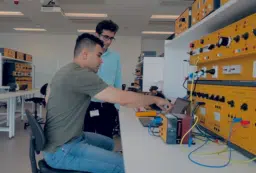Customised seats may give Australian wheelchair racers the winning edge at the Tokyo 2020 Paralympic Games.
University of Adelaide engineer Amy Lewis says specialised seating can provide a cost-effective and efficient way to ensure a perfect fit between off-the-shelf equipment and every athlete’s unique body.
Working with colleagues at the University of Adelaide, the Australian Institute of Sport and Australian Paralympic Committee, Amy has demonstrated a mean performance gain of 3.7 per cent for an Australian athlete when using a hand-carved seating interface fitted to their specific dimensions.
This might sound like a small difference, but in elite wheelchair racing the gap between gold and silver can be less than 0.1 per cent of the winning time.
The researchers used advanced sensing approaches to biomechanically analyse performance through measuring applied forces and accelerations. Through better fit between the athlete and wheelchair, athletes gain more stability, control and movement efficiency.
Biomechanical assessment has also revealed no increased risk of injury due to the new position.
Although customised technology can improve athlete performance, this intervention is not performance enhancing, with the technology observed during competition at both the 2016 Paralympics and 2018 Commonwealth Games.
Effective integration of sophisticated technologies with biomechanical assessment can help reduce competitive inequalities from different impairments across wheelchair sports, and support athletes to compete at their best.
Banner image credit: Amy Lewis





 Fresh Science is on hold for 2022. We will be back in 2023.
Fresh Science is on hold for 2022. We will be back in 2023.